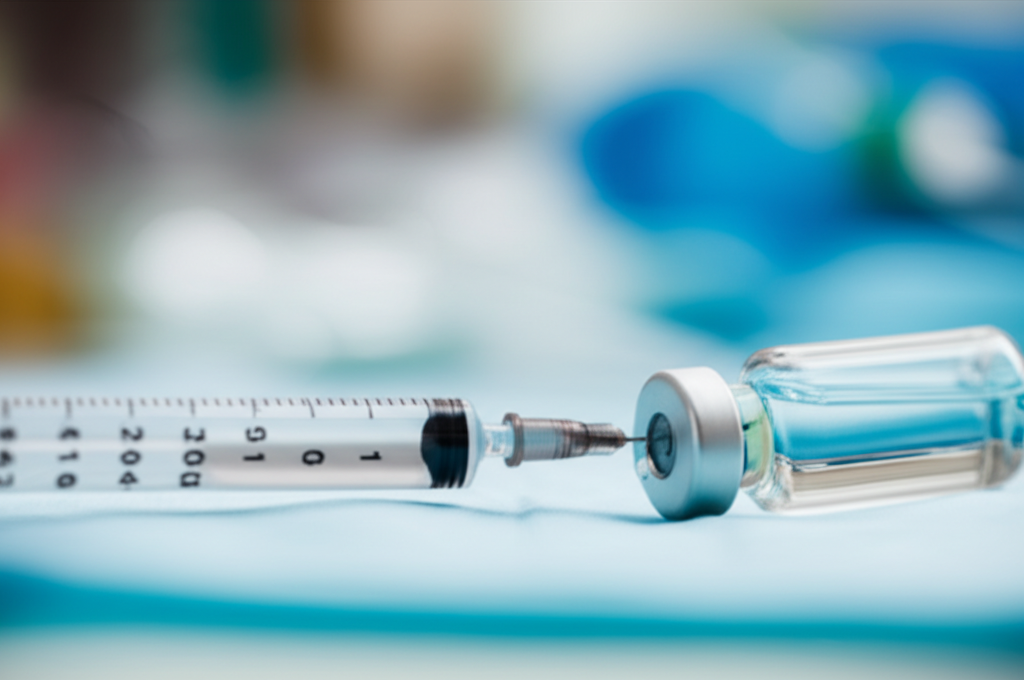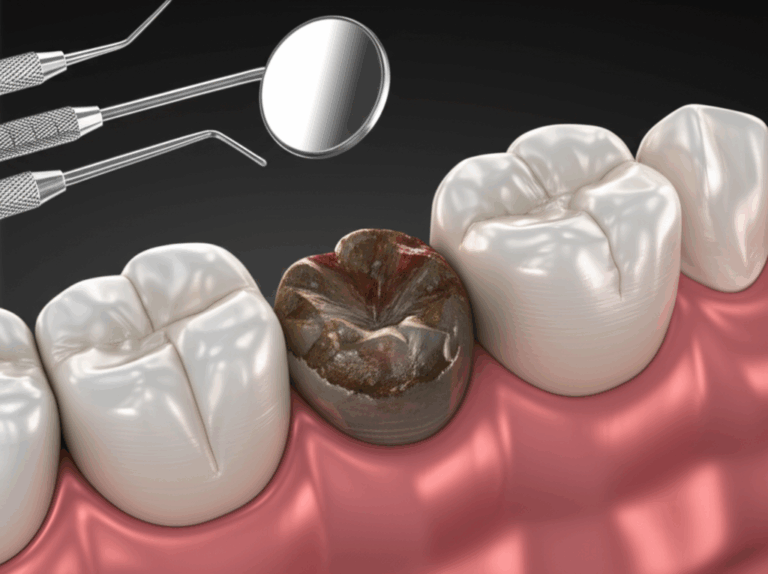
What is the Numbing Shot Dentists Use? Your Guide to Local Anesthesia
Have you ever sat nervously in the dental chair, gripping the armrests, waiting for that little poke before your tooth gets fixed? You’re definitely not alone. The “numbing shot” is something almost everyone goes through when visiting the dentist, and it brings up a lot of questions: What’s actually in that needle? Is it safe? How does it stop the pain? And—maybe most important—how long will my mouth be tingly after?
Let’s look at it together. Whether you need a filling, a root canal, or just want to know more for your next visit, I’ll explain everything you need to know about the numbing shot dentists use.
In This Article
What We’ll Cover:
- Why Do Dentists Numb Your Mouth?
- Which Numbing Shots Are There?
- Why Do Some Shots Have Epinephrine?
- How Dental Numbing Stops the Pain
- What Happens Before, During, and After Numbing?
- Side Effects: Should You Worry?
- Making It Easier: Numbing Shots & Dental Anxiety
- Key Points for a Better Dental Visit
Why Do Dentists Numb Your Mouth?
Let’s start with the big question: Why do dentists numb your mouth at all?
The reason is simple—comfort and safety.
Dental procedures would be really tough to handle without local anesthesia. Even a simple filling means fixing a spot close to your nerves. That’s why dentists work to keep you pain-free. The numbing shot lets your dentist work quickly, carefully, and do a great job—while you try to relax in the chair.
A Usual Example
Imagine getting a cavity filled. Without numbness, it would feel like a drill right in your tooth. Not fun! Thanks to the numbing shot, most people only feel buzzing, pressure, or some moving around, but not the sharp pain of touching nerves.
Which Numbing Shots Are There?
Not all numbing shots are the same! The best choice depends on your needs, what your dentist is doing, and your health.
Main Kinds of Dental Numbing Shots
Let’s go over the most common numbing medicines you might get:
Lidocaine (Xylocaine)
If you’re wondering, “What’s in the shot my dentist uses?”—Lidocaine is the most likely answer. This kind of anesthetic replaced Novocaine years ago because it almost never causes allergies and works well.
- Starts to work: 2–5 minutes
- How long it lasts (with epinephrine): 3–5 hours
- Why it’s used: Easy to use, safe for most people, great for lots of things like fillings or pulling teeth.
Articaine (Septocaine)
A bit newer, very popular because it works fast and gives a good strong numbing, especially for upper teeth.
- Starts to work: 1–3 minutes
- How long it lasts (with epi): 3–6 hours
- Special thing: Goes deeper—good for tricky tooth pulls or root canals.
Mepivacaine (Carbocaine, Polocaine)
Dentists use this if you can’t have epinephrine, like if you have certain heart problems.
- Starts to work: 2–5 minutes
- How long it lasts (no epi): 2–3 hours
- Best for: Quick work, or if you can’t have adrenaline.
Prilocaine (Citanest)
This one can be used with or without epinephrine.
- Starts to work: 2–4 minutes
- How long it lasts: 3–5 hours
- Good for: When a medium amount of numb time is needed.
Bupivacaine (Marcaine)
If you need pain relief longer after big procedures (like wisdom teeth pulled), bupivacaine is the one.
- Starts to work: 5–10 minutes
- How long it lasts: 5–12 hours
- Why use it: Long pain relief after the dental work is done.
Novocaine (Procaine)
Once the most used numbing, Novocaine is almost never used now because it doesn’t last as long and causes more allergies.
- Starts to work: 2–5 minutes
- How long it lasts: 30–60 minutes
- Fact: Most people who think they’re allergic to Novocaine are talking about old types of medicines.
Why So Many Options?
Dentists pick the best shot based on your health, what needs to be done, and how long you need to be numb. For example, if you have high blood pressure, they’ll probably pick a shot without epinephrine.
Related:
Wondering about the materials used in crowns and bridges—work that usually needs good numbing? Learn how a crown and bridge lab makes lifelike replacements for your teeth.
Why Do Some Shots Have Epinephrine?
You might have heard of “epinephrine” (also called adrenaline) and wondered why your dentist puts it in. The answer is to make the numbness stronger and last longer.
What Is Epinephrine?
Epinephrine is a vasoconstrictor—it makes blood vessels smaller in the area you’re being treated. This helps keep the numbing medicine in place longer, so it doesn’t fade too quickly or spread to more of your body.
Main Benefits:
- Makes the numbness last longer (sometimes twice as long)
- Lowers bleeding (making it easier for the dentist to see)
- Keeps extra numbing medicine from spreading too far
When They Skip It:
Some people should avoid epinephrine, like folks with serious heart conditions, very high blood pressure, or certain medicine problems. Your dentist will check for this.
Good to Know:
Even the numbing gel on your gums before the shot doesn’t have epinephrine—it’s only needed for longer numbing from the injection.
How Dental Numbing Stops the Pain
So how does a tiny shot make your tooth and part of your face go “quiet”?
Let’s break it down.
Your Nerve “Wires”
Your teeth and gums have nerves that run from your mouth straight to your brain. When something hurts, these send a message to your brain.
The Roadblock: Local Anesthetic
When a dentist gives the numbing shot, the medicine covers your nerves and stops pain messages from getting through. Like unplugging a cable—the signal can’t go up to your brain.
- Infiltration anesthesia: Shot goes near the tooth’s root—numbs a small area (mostly for top teeth)
- Nerve block: Shot goes deeper, close to a large nerve—numbs more of your mouth (used for lower teeth)
You might feel a quick “bee sting” as the shot starts, but most people say it’s over in seconds. The numbing gel helps with the first poke.
Still Feel Pressure?
The shot stops pain and temperature feelings, but you may still feel pressure, moving, or pulling. That’s normal.
What Happens Before, During, and After Numbing?
Let’s go through a typical numbing visit.
Before the Shot: The Numbing Gel
Dentists almost always rub a numbing gel on your gums first. It takes 1–2 minutes to work and takes away the needle poke.
- Flavors: Gels can taste minty or fruity (ask if you like one)
- Why use it: Especially nice if you worry about needles
During: The Shot & The Numb Feeling
- The poke: Most feel a quick pinch, then a gentle push. Gel helps with the first sting.
- Weird feeling: After a few minutes, your cheek, lip, or tongue may feel “fat,” tingly, or strange. That’s normal. Some say it feels like their face is “asleep.”
Will I Feel Completely Numb?
Usually, yes. You won’t feel sharp pain, but you might notice pressure or movement. If you feel anything more, speak up—you might need more numbing.
After: Waiting for the Numbness to Wear Off
How Long Does It Last?
- Short visits (like fillings): 1–2 hours
- Bigger work (like pulling teeth, root canals): up to 4 hours (maybe longer if bupivacaine was used)
Tips for Numbness
- Don’t chew the numb part. Lots of people bite their cheek or tongue by accident—ouch!
- No hot drinks or food. You could burn yourself and not feel it.
- Wait to eat until the numbness is gone. Food will taste and feel better.
What If It Lasts Too Long?
Mild numbness or tingling after a bigger procedure is normal. But if your mouth is still numb after 8+ hours, or you have trouble talking, swallowing, or feel swelling, call your dentist.
Data and Facts: Quick Table
Here’s a simple table on the most common dental numbing medicines, how quickly they work, how long, and other facts.
| Type | Starts Working | How Long (With Epi) | Usual Uses | How Common/Safe |
|---|---|---|---|---|
| Lidocaine (2% + Epi) | 2–5 minutes | 3–5 hours | Most common for all dental work | Used in about 80–90% of cases; real allergies are very rare |
| Articaine (4% + Epi) | 1–3 minutes | 3–6 hours | Good for tough extractions and root canals | Second most used, very safe |
| Mepivacaine (3% no Epi) | 2–5 minutes | 2–3 hours | Short work or if you can’t have epinephrine | About 5–10% use, shorter acting |
| Prilocaine (4%, ±Epi) | 2–4 minutes | 3–5 hours | Like lidocaine but a little less strong | Rare; very low chance of causing problems |
| Bupivacaine (0.5%+Epi) | 5–10 minutes | 5–12 hours | For very long numbness (big dental work) | Less than 5% of cases, good for long pain relief after surgery |
| Novocaine (Procaine) | 2–5 minutes | 30–60 minutes | Almost never used now | Old fashioned, replaced by newer medicines |
| Epinephrine | N/A | Makes numbing last longer | Not a painkiller—added to most shots | Used in 80–90% of cases, some can’t have it |
| Numbing Gels | 1–2 minutes | 10–20 minutes | Rubbed on gum before shots, helps with needle | Used almost always |
| Problems/Side Effects | Varies | Varies | Most are mild (fluttery heart, anxiety) | True allergies very rare—most “reactions” are from nerves/anxiety |
| Patients Like It | N/A | N/A | Most people feel much better with numbing shots | Over 90% happy with pain control |
Side Effects: Should You Worry?
Most side effects from dental numbing shots are mild, go away fast, and are easy to deal with.
Normal Effects:
- Numb lips, tongue, or face (for up to 4 hours)
- Small bruise or swelling where you got the shot
- Metal taste (sometimes)
- Slightly faster heartbeat (if epinephrine was used)
Rare, But Possible:
- Allergic reaction: Red, itchy, or hives where you got the shot (really rare)
- Paresthesia: Lasting tingling or numbness (happens if the nerve was touched, usually gets better on its own)
- Anaphylaxis: Very serious allergy—extremely rare
- Toxicity: Too much medicine, very unlikely with dentist care
> When to call your dentist:
> – Numbness lasts over 8 hours
> – Trouble breathing, swallowing, or rash
> – Big swelling or pain that gets worse
Making It Easier: Numbing Shots & Dental Anxiety
For some people, just thinking about a needle makes them dread going to the dentist. Here are some ways dentists help nervous patients:
How Dentists Lower Injection Pain:
- Numbing gel—takes away most of the needle poke
- Slow injection—gives the shot slowly, so it hurts less
- Distraction—music, something to hold, or slow breaths
- Really thin needles—smaller than you expect
Scared of Needles?
Even if it seems scary, most people agree the worry is worse than the actual poke.
- Tell your dentist. Good ones will try extra hard to make you comfortable.
- For some, sedation dentistry is possible—pills, laughing gas, or even gentle IV medicine for major needle fear.
Numbing for Kids
Dentists are trained to help kids feel better—fun flavors, distraction, and sometimes even “magic wands” (tiny computerized numbing tools).
Special Situations:
If you’re worried about allergies, heart conditions, high blood pressure, or being pregnant, the dentist will pick what’s safest for you. They’ll go over your health history first.
Your Choices: Types of Dental Numbing and How They’re Used
Not all dental work needs the same kind of numbing. Here’s a simple guide:
What You Can Control
- Talk about your worries: Dentists hear this all the time! Tell them if you’ve had bad experiences.
- Ask about the gels: More numbing on your gums means less pain.
- Pick your time: Some find morning appointments less stressful.
What Your Dentist Decides
- Which medicine? It depends on how long your procedure is, your health, and what you prefer.
- Which shot?
- Simple infiltration (for one tooth): numbs just that area
- Nerve block (for bottom teeth): numbs more of your mouth
If you’re getting a crown, implant, or bridge, new materials and digital tools—like those from a digital dental lab—help your dentist work quickly and comfortably.
> What if you have health problems?
> Don’t keep secrets! Diabetes, heart problems, or pregnancy can make some shots a better (or worse) choice.
What to Know for Kids
Most kids do just fine with numbing shots. Dentists use smaller doses and help distract them. If your child needs a lot of work, sedation or other choices can be discussed.
Who Should—or Shouldn’t—Get The Numbing Shot
Dental numbing shots are safe for almost everyone.
Let’s see who for sure:
Good Choices for Numbing Shots:
- Adults and kids who need fillings, extractions, root canals, crowns, or bridges
- People without known allergies to these medicines (very rare)
- Anyone wanting pain-free dental work
Who Needs Special Care?
- Known allergies to certain numbing shots (tell your dentist!)
- Serious heart disease or recent heart trouble (may need a certain type)
- Pregnant patients (some numbing shots are safer)
- Bleeding problems (some shots may make bleeding more common)
Don’t worry—dentists have lots of different medicines and methods to keep you safe.
Your Healthy Takeaway (Quick Wrap-Up)
Here’s what you should remember for your next dental visit:
Key Points:
- The numbing shot is your friend—it makes dental work comfortable and safe.
- The most common shots (like lidocaine and articaine) are carefully chosen for you.
- Epinephrine helps numb longer, but isn’t for everyone.
- Your job? Tell your dentist your health issues, allergies, and if you’re nervous. There’s always a way to make it better.
- Side effects are usually mild—serious problems are almost unheard of now with good care.
- Gels, slow shots, and even sedation help even really anxious people get through.
Still worried or have tough questions? Call your dentist. They’re more than tooth doctors—they’re your partners to keep you healthy, comfortable, and smiling.
And remember: Knowing what’s in that little shot can take away the worry of the unknown, and help you feel okay in the dentist’s office. That’s a win for you and your smile!
Curious about dental materials and how careful numbing makes new treatments possible? Learn about new solutions and care from a china dental lab—using digital and ceramic methods to help your dentist make your teeth look and feel great.
Frequently Asked Questions About Dental Numbing Shots
Q: Is it normal to feel nervous?
Of course! Even dentists can feel nervous about dental work. The most important thing is to talk about it so your dentist can help.
Q: How long should the numbness last?
Anywhere from 1–4 hours. If it goes much longer, it usually isn’t dangerous—call your dentist if you’re bothered.
Q: Can you be allergic to dental anesthetics?
It’s rare, but possible. If you know you’re allergic, tell your dentist.
Q: Is it safe when pregnant or with health problems?
Mostly yes—your dentist will pick the right medicine for you. Some kinds are better for certain situations.
Q: What if the numbing doesn’t work well?
This can happen if your body works through the medicine fast, or if there’s an infection. Dentists can give you more or try something different.
Sources & Trust Info
- American Dental Association (ADA): Local Anesthesia in Dentistry
- Mayo Clinic: Dental Procedures and Numbing Agents
- Journal of the American Dental Association: “Patient Satisfaction and Local Dental Anesthesia”
- Clinical studies on numbing medicine safety
(Reviewed for truth by licensed dental professionals.)
Your dental health journey is just for you, but you don’t have to go it alone. The more you know, the better you feel in the dentist’s chair—and that’s good for you and your smile.








